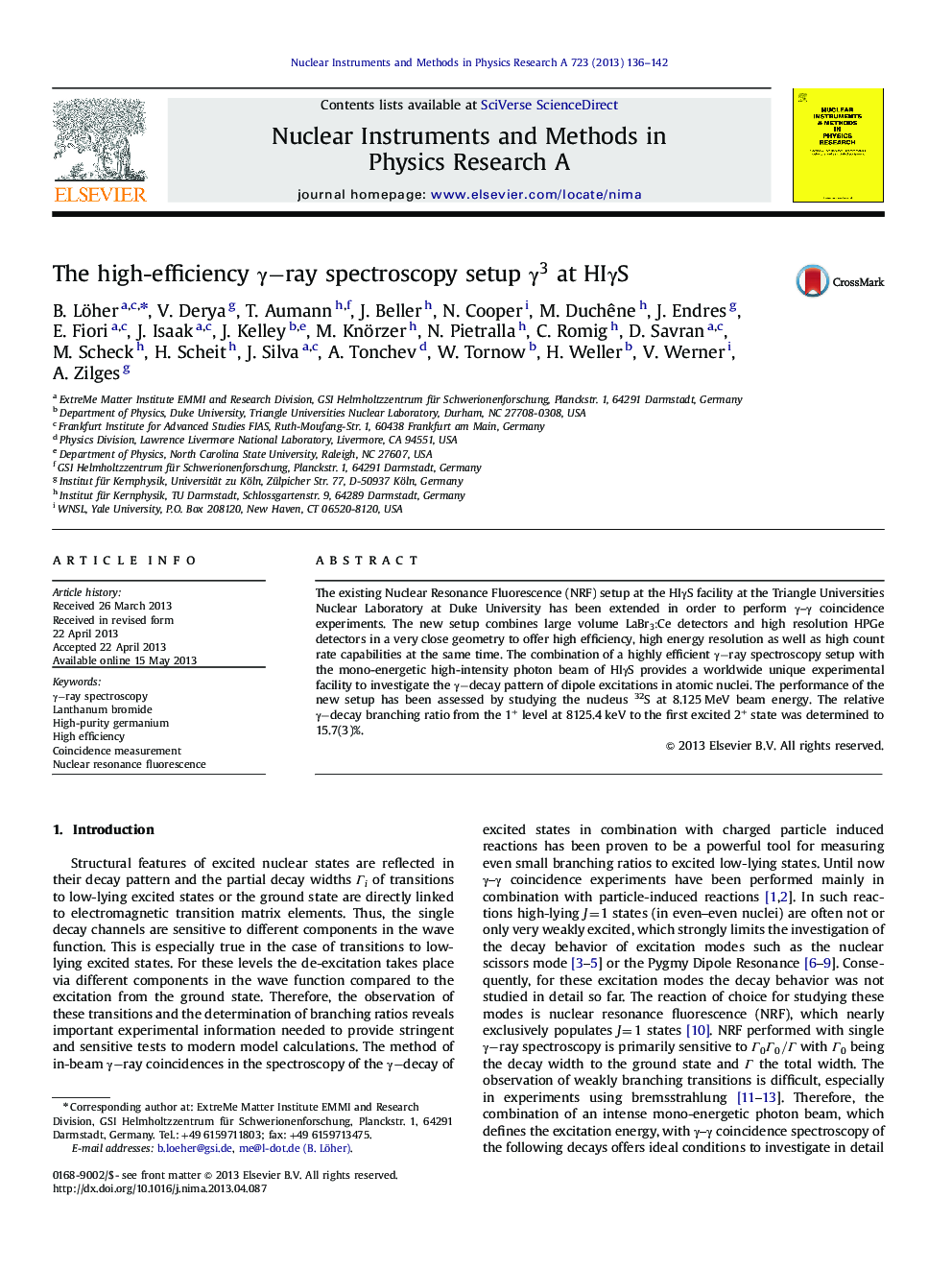| Article ID | Journal | Published Year | Pages | File Type |
|---|---|---|---|---|
| 1823146 | Nuclear Instruments and Methods in Physics Research Section A: Accelerators, Spectrometers, Detectors and Associated Equipment | 2013 | 7 Pages |
Author-Highlights•We have extended the existing NRF setup at HIγS at TUNL to combine large LaBr and HPGe detectors.•NRF experiments with the mono-energetic beam in combination with Gamma coincidences are possible.•We describe the changes to the experimental setup and data acquisition as well as data analysis.•The performance of the new setup was assessed by investigating the nucleus 32S.•We present a more precisely measured value for the branching ratio for the 1+→2+1+→2+ transition.
The existing Nuclear Resonance Fluorescence (NRF) setup at the HIγSHIγS facility at the Triangle Universities Nuclear Laboratory at Duke University has been extended in order to perform γ–γγ–γ coincidence experiments. The new setup combines large volume LaBr3:Ce detectors and high resolution HPGe detectors in a very close geometry to offer high efficiency, high energy resolution as well as high count rate capabilities at the same time. The combination of a highly efficient γ-rayγ-ray spectroscopy setup with the mono-energetic high-intensity photon beam of HIγSHIγS provides a worldwide unique experimental facility to investigate the γ-decayγ-decay pattern of dipole excitations in atomic nuclei. The performance of the new setup has been assessed by studying the nucleus 32S at 8.125 MeV beam energy. The relative γ-decayγ-decay branching ratio from the 1+ level at 8125.4 keV to the first excited 2+ state was determined to 15.7(3)%.
